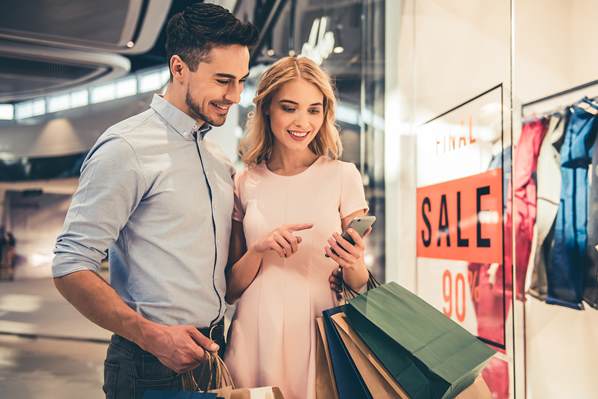
Indoor navigation and indoor positioning are useful tools for optimizing business processes and improving the customer experience.
These systems work based on geolocation and allow companies to remain competitive. With their help, you can improve customer service, increase customer loyalty to your company, and develop an effective and lucrative marketing campaign. Implementing such innovative technologies expands the capabilities of the company and contributes to its digital transformation.
How do indoor positioning and navigation systems work?
Indoor positioning and navigation are systems that allow you to determine the location of objects indoors and open up the possibility of quick and convenient movement inside buildings.
Indoor positioning technologies are based on miniature beacons (also known as tags) that are installed indoors. At a certain cadence, these sensors send out signals that are received by readers and sent to a server for further processing. After that, the processed information is sent to computers or smartphones with a pre-installed app for building a convenient route.
Positioning and navigation primarily involve Bluetooth Low Energy beacons, which operate based on the iBeacon platform. They are small in size, allow for small electricity consumption, and can help detect objects with an accuracy of up to 3 ft. Other popular location technologies include Wi-Fi and UWB.
Introducing an indoor positioning system into the company’s infrastructure dramatically increases customer satisfaction due to the following benefits:
- building short routes on the map to points of interest inside large buildings;
- reducing the time for searching the necessary objects inside buildings;
- optimizing crowd flows, which is especially important in busy places such as airports, railway stations, and large malls;
- improving the safety of visitors and staff.
An important benefit is an ability to set up targeted advertising, which takes into account the interests of a particular buyer. Instead of unnecessary intrusive ads, users receive useful information and messages about promotions or discounts, which ultimately increases their loyalty to the company.
Features and Benefits of Systems That Improve Customer Experience
Indoor positioning and navigation open up wide opportunities for business development. They can be tailored to almost any industry and widely used in retail, transport, manufacturing, and the entertainment industry.
Building convenient and quick routes to objects
Thanks to indoor positioning technologies, visitors can quickly get to the desired building or room. It’s enough to type in your point of interest to instantly build a suitable route. If needed, you can set additional movement parameters – for example, a route that exclusively uses elevators for people with disabilities.
The system can direct customers to discounted goods, ticket desks at the airport, and offices in business centers. If needed, the route is developed so that a customer passes by outlets of partner companies, which can increase the average spend. Points of interest are displayed on a digital map and allow the visitor to improve their customer experience.
It’s important to note that all route changes occur in real time. In the future, this information can be used by company managers for analytics.
Personalized communication with customers based on location data
Personalization is a growing trend among businesses. According to statistics, about 89% of companies today use it to improve the quality of customer service. Through personalized communication, you can provide relevant and useful content that will certainly attract potential customers. In conjunction with indoor positioning, this allows for compelling offers that correlate with the visitor’s itinerary. It’s also worth noting that the software complies with privacy rules and does not collect the customers’ personal data.
Here are some examples of personalized communication:
- when passing by a café or restaurant, the user receives a notification about a special offer or new dishes;
- while next to a gym, the visitor receives information about membership discounts;
- when entering a parking lot, the driver sees a reminder on their smartphone about activating their ticket.
All these messages allow customers to feel significant to the company, increase their satisfaction and encourage them to come back to this particular business.
Visitor movement analytics to better understand customer intent
The use of indoor positioning technologies provides businesses with detailed analytics through which they can better understand the desires and intentions of customers. So, if a person is interested in any product at the mall, you can show them relevant ads or interactive tips with information about the product they’ve been looking for.
Based on a user’s movements around a museum, you can send them targeted push notifications with relevant content, and encourage them to visit again through promotional offers or information about upcoming events. At railway stations or airports, indoor location positioning sends updates related to the transport hub or the schedule of aircraft/trains.
Analytics opens up opportunities for optimizing a company’s working process. If you have information about customers’ priorities, you can correctly arrange goods in a store or make the most convenient route around a business center, college campus, or hospital. Analytical data helps better understand visitor behavior and do everything possible to ensure that each visit is comfortable and enjoyable for them.
Quickly searching for goods in stores
By implementing high-accuracy indoor positioning in stores, you can speed up the search for goods for customers. Using a mobile app, they can simply set a list of products they’re looking for, and the software will develop a suitable route based on their shopping needs. All products are displayed on the store map. The shopper only has to follow the route and add products from the list to their cart. At the same time, the platform may send notifications about related products or offer items that are currently on sale. This combination reduces the time spent visiting the mall and leaves a person satisfied with shopping.
To sum up, indoor positioning and navigation systems can drastically improve the quality of customer service. The combination of a mobile app with location-based marketing improves the interaction between the company and potential customers, increases the average spend, and helps optimize business processes.




